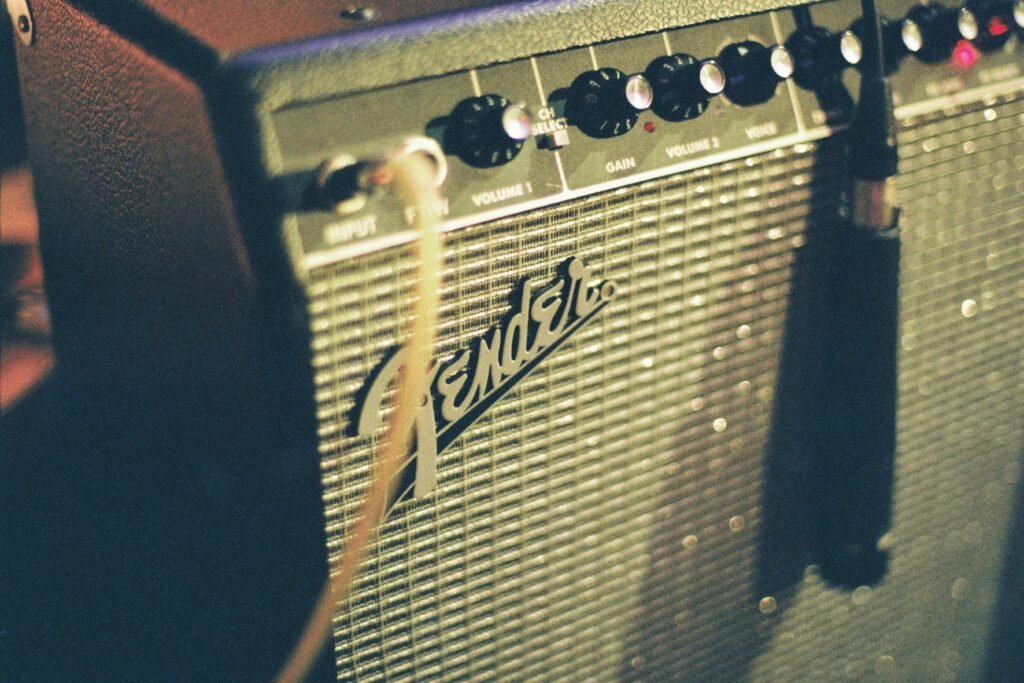By the time Volta arrived in 2007, Björk had already carved a path as one of music’s most unpredictable and adventurous voices. Her previous album, Medúlla, was an austere and intimate record, built almost entirely from human voices. In contrast, Volta veers in the opposite direction — louder, more colorful, and driven by rhythm and noise rather than quiet reflection.
Björk described the project as an effort to create something more physical and energetic. This shift wasn’t just sonic but emotional, aiming to reconnect with a sense of movement and even playfulness. It was an album meant to be heard in motion, not just studied in silence.
Sonic Exploration

Volta leans into a bold and often clashing soundscape. The production is neither polished in the traditional sense nor fully raw. Instead, it sits somewhere in between — deliberately textured, sometimes chaotic, and often dense. This approach supports the album’s restless energy but can also become overwhelming. At its best, the production feels alive and kinetic. At its worst, it borders on cluttered.
The arrangements show flashes of creativity. Horns blast across tracks like “Earth Intruders,” creating a sense of urgency, while the tribal drum patterns push the songs forward with brute force. Strings and electronic elements weave in and out, never quite settling into one mood. Björk’s voice, as always, remains central. She uses it like another instrument, bending and layering it in ways that defy typical pop structures.
Genre-wise, Volta is a melting pot. There are traces of experimental pop, electronic, tribal percussion, and even industrial touches. The inclusion of Malian instruments and Chinese pipa reflects Björk’s interest in global music traditions, though not every fusion feels fully developed. Timbaland’s contributions introduce a pop-R&B flavor that’s more straightforward, but these moments can feel disconnected from the album’s deeper, more abstract tracks.
Lyrical Analysis

Lyrically, Volta is as layered and unpredictable as its sound. Björk draws on a mix of political, personal, and mythical themes, though the delivery often leans toward abstraction. There’s a strong undercurrent of empowerment throughout — whether it’s environmental urgency in “Earth Intruders” or feminist calls to action in “Declare Independence.” These messages are bold, but they’re rarely spelled out. Instead, they surface in bursts of imagery and metaphor.
Recurring motifs include nature, movement, and transformation. In songs like “Wanderlust,” Björk touches on the desire to escape, to evolve, to keep pushing forward. It mirrors the album’s restless structure and supports the sense that this is a record about motion — both physical and emotional.
The lyrics themselves range from poetic to puzzling. Björk often avoids direct narrative, choosing instead to write in fragmented thoughts and suggestive phrases. This can add a dreamlike quality but also creates a barrier to emotional clarity. Listeners who prefer lyrical precision may find the writing opaque or too elusive to connect with deeply.
Still, there are moments that hit hard. Lines from “Pneumonia” or “I See Who You Are” carry a fragile, almost whispered weight. When the emotion cuts through the conceptual fog, it’s effective. But those moments are scattered. Much like the music, the lyrics of Volta often feel caught between ambition and accessibility. They challenge more than they comfort, which is either a strength or a shortcoming depending on what a listener seeks.
Cohesion and Flow

One of Volta’s most persistent challenges lies in its flow. The album kicks off with a surge of energy in “Earth Intruders,” setting a high-octane tone that suggests a forceful, unified journey. However, what follows doesn’t always support that initial promise. Tracks often shift abruptly in mood and style, moving from chaotic percussion to delicate ballads without much connective tissue.
There isn’t a clear narrative thread guiding the listener from beginning to end. Songs like “Hope” and “Declare Independence” deal with grand, outward-looking themes, while others, like “Pneumonia,” pull inward into quieter, more personal space. These jumps can feel disorienting. It’s not that the album lacks strong ideas — it’s that they don’t always seem to belong to the same world.
Thematically, Volta tries to balance global concerns with intimate reflection. At times, this dual focus works. But more often, the contrasts feel unresolved. A track like “Innocence,” with its punchy, synthetic beat, sits uneasily next to something like “I See Who You Are,” which leans on organic instrumentation and emotional subtlety.
This inconsistency doesn’t ruin the album, but it does make it harder to grasp as a whole. Volta feels more like a collection of standalone experiments than a tightly woven piece of work. For an artist known for crafting immersive sonic worlds, that lack of cohesion makes this effort feel somewhat scattered. The ambition is there — the execution is what falters.
Standout Tracks and Moments
While Volta is uneven, it’s not without moments that shine. A few tracks manage to cut through the album’s clutter and leave a lasting impression, either through bold production choices or emotional resonance.
Earth Intruders
“Earth Intruders” opens the album with a bang. It’s one of the most energetic and immediate songs Björk has ever made. The tribal drums, co-produced by Timbaland, crash forward with urgency. There’s a rawness to the track that sets a strong tone, even if the rest of the album doesn’t always follow its lead.
Wanderlust
“Wanderlust” stands out for its layered arrangement and lyrical depth. The horn section surges like ocean waves, and Björk’s vocal performance balances longing with strength. The track encapsulates the album’s recurring theme of movement and searching, making it one of the more thematically grounded moments on Volta.
I See Who You Are
“I See Who You Are” offers a stark contrast — quiet, slow, and deeply intimate. The use of the Chinese pipa adds a delicate texture that complements Björk’s gentle vocals. It’s one of the few moments where the album pauses long enough to let emotion settle in.
Declare Independence
“Declare Independence” is another highlight, though divisive. Its heavy distortion and repeated calls to action give it a confrontational energy. Whether one finds it empowering or abrasive, there’s no denying its force. It captures the album’s rebellious spirit in its most unfiltered form.
Memorable Moments
Among the scattered brilliance, there are smaller moments worth noting. The sudden break into silence in “Pneumonia,” the subtle layering of strings on “Hope,” or the restrained vocal delivery on “Dull Flame of Desire” — these are flashes where Björk’s artistry shines through. They remind us of her ability to marry the avant-garde with genuine emotion, even if Volta doesn’t always find the right balance.
Artistic Contribution and Innovation

When Volta was released in 2007, it stood out as a bold, if somewhat erratic, statement within both the experimental pop and broader electronic music scenes. At a time when mainstream pop was leaning into polish and formula, Björk’s refusal to conform remained one of her defining traits. Volta doesn’t chase trends — it challenges them, even if the results are mixed.
The album attempts to bridge gaps between genres in ways few artists at her level dared. Blending tribal percussion with electronic beats, orchestral flourishes, and global folk traditions, Björk continues her role as a boundary-pusher. Collaborations with artists like Timbaland and Toumani Diabaté signal a willingness to take creative risks, pairing seemingly incompatible sounds in search of something new.
That said, Volta doesn’t always break ground so much as shake it. The innovations feel more like fragments of potential rather than fully realized leaps. The fusion of global sounds is ambitious, but it sometimes feels more like juxtaposition than integration. The political themes, too, are delivered with an urgency that’s admirable, but they don’t always gain the depth or clarity needed to leave a lasting impact.
Still, the album contributes to the ongoing dialogue about what pop music can be. Even when it stumbles, Volta remains fearless in its experimentation. It may not redefine the genre, but it continues Björk’s legacy as an artist who refuses to sit still, who sees the album format as a space for disruption rather than safety. In that regard, its imperfections are part of its statement.
Closing Thoughts

Volta is a complex, often conflicted record. Its strengths lie in its fearless ambition, vibrant instrumentation, and Björk’s continued commitment to pushing artistic boundaries. Tracks like “Earth Intruders,” “Wanderlust,” and “I See Who You Are” showcase her ability to blend bold concepts with emotional nuance. There are moments of real beauty and innovation, where her vision feels both grand and grounded.
But the album struggles with consistency. The flow is uneven, and the shifts between genres and themes can feel more disjointed than dynamic. Not every experiment lands, and some of the production choices feel more chaotic than deliberate. The emotional core is also harder to access compared to her more cohesive works like Vespertine or Homogenic.
Still, Volta deserves credit for its audacity. It’s an album that refuses to settle, even if that restlessness sometimes works against it. For listeners willing to navigate its highs and lows, there’s reward in the journey — but it’s not one that offers immediate or universal resonance.
Official Rating: 7/10
This score reflects both the album’s impressive ambition and its uneven execution. Volta is a fascinating detour in Björk’s career — not her most refined work, but a bold and necessary step in her continued evolution as an artist.
